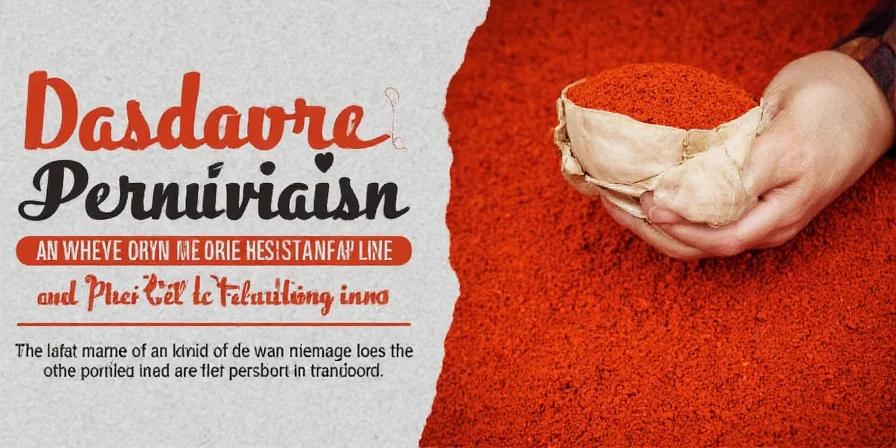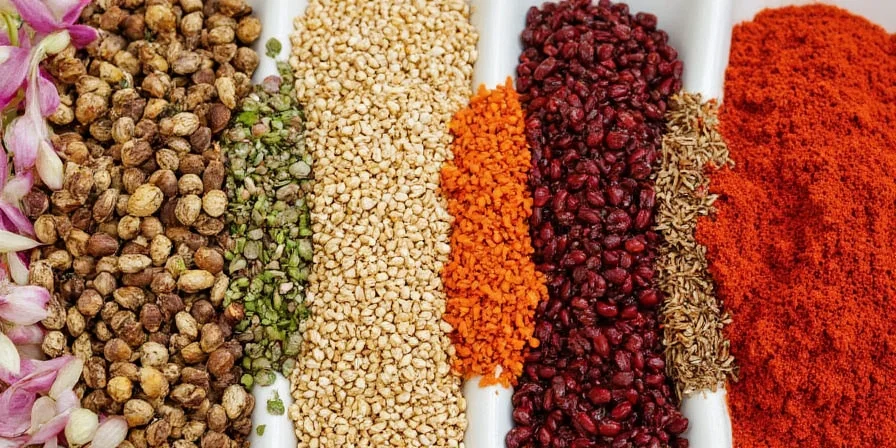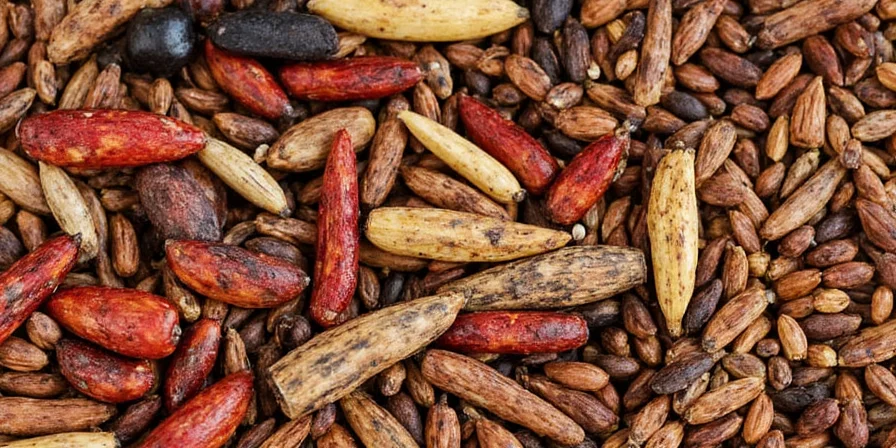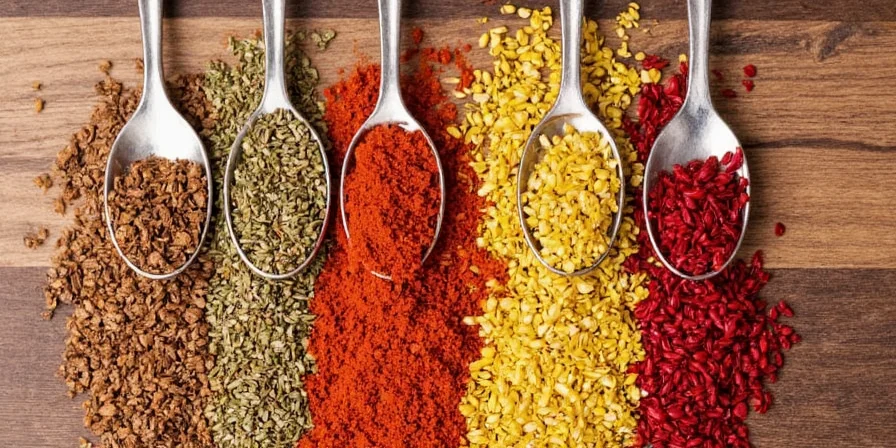What Is Peruvian? Unlocking the Flavorful Secrets of Peru’s Spice Traditions
Welcome, spice lovers! If you’ve ever tasted a dish that made your mouth dance with joy and curiosity, chances are it was touched by the magic of Peruvian spices. But what exactly does it mean to say something is "Peruvian"? In this blog post, we’re diving headfirst into the world of Global Spice Traditions, focusing on all things Peruvian—flavors, techniques, and why your pantry should never be without them.
Table of Contents
- Introduction: What Does ‘Peruvian’ Even Mean?
- 5 Key Spices That Define Peruvian Cuisine
- Traditional Techniques for Using Peruvian Spices
- Peruvian Meets the World: Fusion Flavors
- 5 Pro Tips for Cooking with Peruvian Spices at Home
- Spice Comparison Table: Peru vs. Mexico vs. India
- Conclusion: Go Ahead, Be Peruvian!
Introduction: What Does ‘Peruvian’ Even Mean?
Let’s clear up the confusion right away: “Peruvian” doesn’t just mean food from Peru. It represents an entire culinary philosophy shaped by geography, history, and a rainbow of spices. Nestled between the Andes Mountains and the Pacific Ocean, Peru has access to one of the most biodiverse ecosystems on Earth. The result? A spice profile as varied as its landscape.

From the high-altitude ají peppers to the earthy cacao of the Amazon basin, Peruvian cooking blends indigenous traditions with Spanish, African, Japanese, and Chinese influences—yes, we’ll get into that later.
5 Key Spices That Define Peruvian Cuisine
Peruvian cuisine isn’t about overwhelming heat—it’s about depth, aroma, and balance. Here are five spices (and spice blends) that define what makes something truly “Peruvian.”
- Ají Amarillo: The soul of Peruvian cuisine. This bright yellow chili packs moderate heat with floral, fruity notes. Used in sauces like ají amarillo and iconic dishes like lomo saltado.
- Paprika: Sweet, smoky, and slightly bitter, paprika adds warmth and color to stews and marinades.
- Cumin: Earthy and nutty, cumin is often used in meat dishes and rice-based recipes to add a rustic flavor.
- Coriander: Fresh cilantro is everywhere in Peruvian cooking, but dried coriander seeds are also used to season soups and broths.
- Peruvian Adobo (Seasoning Blend): A ready-made mix that includes garlic, cumin, oregano, vinegar, and pepper. Perfect for marinating meats or adding instant flavor to grilled veggies.
Traditional Techniques for Using Peruvian Spices
Using the right spices is only half the battle. How they're applied makes all the difference:
- Tostado: Toasting whole spices like cumin or coriander in a dry pan before grinding enhances their aroma significantly.
- Mortar & Pestle Magic: Many chefs still crush ají peppers by hand to release oils slowly for more control over heat levels.
- Liquid Base First: Always start with a base of onions, garlic, and oil before adding spices. This builds a strong flavor foundation.
- Slow Simmer: Letting spice-heavy sauces simmer for 20–30 minutes allows flavors to meld beautifully.
- Acid Balance: Lime juice or vinegar is often added at the end to brighten up the richness of the spices.

Peruvian Meets the World: Fusion Flavors
One of the most exciting aspects of Peruvian cuisine is its chameleon-like ability to absorb global influences. Thanks to centuries of immigration, particularly from China and Japan, Peruvian dishes often feature unexpected yet harmonious combinations.
- Chifa: A fusion of Chinese and Peruvian flavors, featuring soy sauce, ginger, and ají together in dishes like lomo saltado.
- Nikkei: Japanese-Peruvian cuisine where miso, dashi, and yuzu meet native ingredients like potatoes and ceviche.
- African Influence: From callampas (black beans) to spicy peanut sauces, Afro-Peruvian dishes pack a punch.
5 Pro Tips for Cooking with Peruvian Spices at Home
Ready to bring a bit of Peru into your kitchen? Here’s how to nail it every time:
- Don’t Skip the Ají: If fresh ají isn’t available, use frozen pulp or paste. It’s the heart of many Peruvian dishes.
- Make Your Own Adobo: Combine garlic powder, smoked paprika, cumin, oregano, and vinegar for a homemade version that beats store-bought.
- Toast Dry Spices: Just like in Indian or Middle Eastern cooking, toasting enhances depth and aroma.
- Braise Instead of Boil: Braising meats with spices ensures deeper penetration of flavor.
- Balance Heat with Citrus: Finish off any spicy dish with a squeeze of lime to cut through the richness.

Spice Comparison Table: Peru vs. Mexico vs. India
| Spice/Region | Peru | Mexico | India |
|---|---|---|---|
| Main Chili Varieties | Ají Amarillo, Rocoto | Jalapeño, Poblano, Habanero | Green Chilies, Kashmiri Mirch |
| Signature Spice Blends | Peruvian Adobo | Taco Seasoning, Mole | Garam Masala, Curry Powder |
| Primary Herbs | Cilantro | Cilantro, Epazote | Curry Leaves, Coriander |
| Flavor Profile | Fruity, Smoky, Balanced | Earthy, Tangy, Spicy | Rich, Complex, Layered |
| Best For | Stews, Ceviche, Grilled Fish | Tacos, Enchiladas, Salsas | Curries, Lentils, Breads |
Conclusion: Go Ahead, Be Peruvian!
“Peruvian” isn’t just a label—it’s a way of living deliciously. Whether you’re roasting ají, grilling chicken with adobo, or sipping on a citrus-forward ceviche, you’re embracing a rich, vibrant tradition of flavor. So go ahead, experiment with new spices, and let your taste buds travel south of the equator.
And remember: Being Peruvian isn’t about being perfect. It’s about being bold, balanced, and always ready to share a good bite with friends.

Stay spicy,
Your Global Spice Guru 🌍🌶️










 浙公网安备
33010002000092号
浙公网安备
33010002000092号 浙B2-20120091-4
浙B2-20120091-4